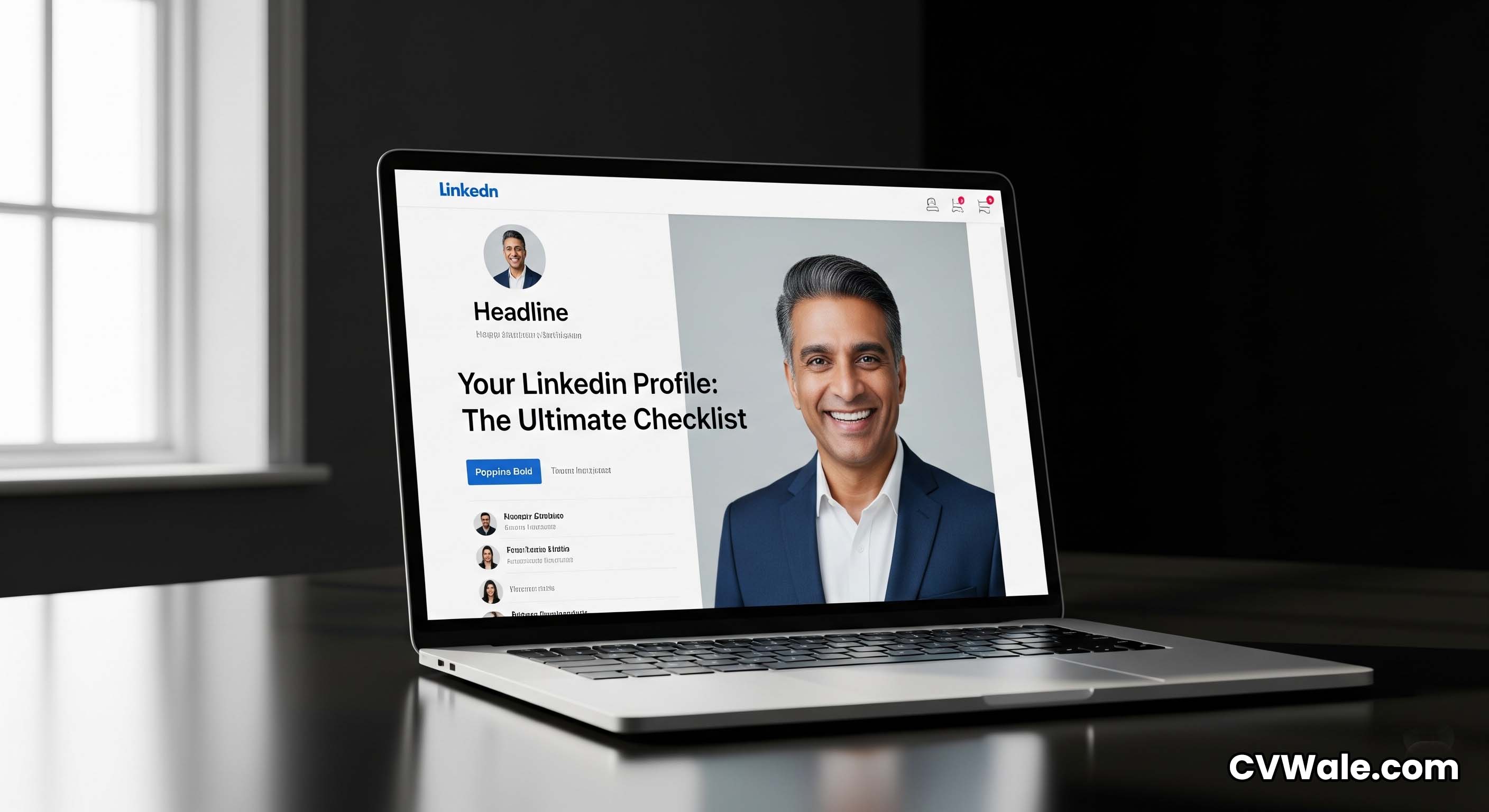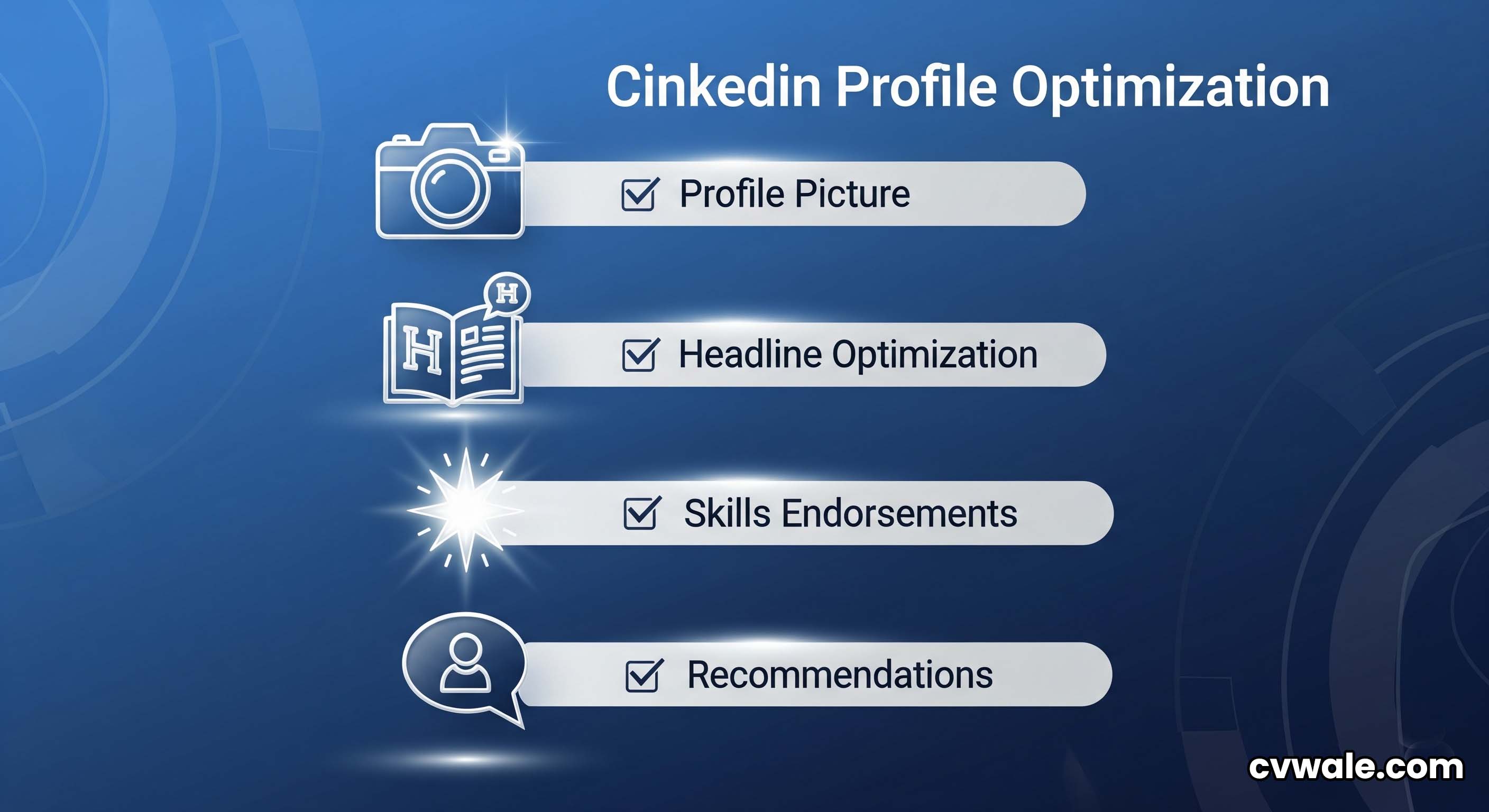Your LinkedIn Profile is Your Second Resume: The Ultimate Optimization Checklist (2025)

In the digital-first job market of 2025, your CV is only one half of the story. After a recruiter is impressed by your resume (built perfectly on a tool like CVWale, of course), what is their immediate next step? They will search for you on LinkedIn. Your LinkedIn profile has evolved from a simple online resume to a dynamic, interactive portfolio that works for you 24/7. It's your digital handshake, your professional brand headquarters, and a powerful networking tool all in one. An incomplete, outdated, or unprofessional LinkedIn profile can undermine even the most polished CV. Conversely, a fully optimized profile can open doors to opportunities you never even applied for. Think of it as your second, more detailed resume. This ultimate checklist will guide you through every section of your LinkedIn profile to ensure it is fully optimized to attract recruiters in India and build a powerful professional brand.
1. Professional Profile Picture: Your Digital First Impression
Your photo is the first thing people see. Profiles with a professional headshot get up to 21 times more views.
Do: Use a recent, high-resolution headshot where you are smiling, dressed professionally (appropriate for your industry), and against a clean, non-distracting background.
Don't: Use a selfie, a cropped group photo, a vacation picture, or a photo where you are not looking at the camera.
2. Strategic Background Banner: Your Personal Billboard
The banner image behind your profile picture is valuable real estate. Don't leave it as the default blue background.
How to optimize: Use this space to visually represent your brand. It could be an image of you speaking at an event, a banner with your key skills or a quote you live by, or an image related to your industry. Tools like Canva have free templates for LinkedIn banners.
3. A Keyword-Rich Headline: Your 120-Character Pitch
Your headline is the most important text on your profile. It follows you everywhere on LinkedIn. "Student at [University Name]" or "Looking for opportunities" are massive wasted opportunities.
How to optimize: Your headline should be a mini-pitch that includes your current role, key skills, and what you do. Use vertical bars `|` to separate phrases.
Formula: `[Your Job Title] | [Key Skill 1] | [Key Skill 2] | [Unique Value Proposition]`
Example: "Senior Software Engineer at XYZ | Java & AWS Specialist | Building Scalable FinTech Solutions"

4. A Compelling "About" Section: Tell Your Story
This is your chance to expand on your headline. The "About" section should be a first-person narrative that tells your professional story.
How to optimize: Structure it in 3-4 short paragraphs.
- Hook: Start with a powerful opening sentence about your passion or mission.
- Body: Elaborate on your years of experience, key areas of expertise, and your most significant achievements.
- Call to Action: End by stating what you're looking for and how people can connect with you. e.g., "I'm always open to discussing new opportunities in product management. Feel free to connect with me or reach out via email."
5. Detailed Experience Section: More Than Just a Copy-Paste
Don't just copy and paste your CV's work experience. LinkedIn allows you to be more detailed.
How to optimize: For each role, use 3-5 bullet points written with strong action verbs. More importantly, use the "Featured" section to add rich media like links to projects, articles you've written, presentations you've given, or company websites. This provides tangible proof of your work.
6. Skills & Endorsements: Validate Your Abilities
The Skills section is heavily used by recruiters for searching.
How to optimize: Add up to 50 relevant skills. Pin your top 3 most important skills to the top. Proactively endorse your colleagues for their skills; they are likely to return the favor, which adds credibility to your profile.
7. Recommendations: Powerful Social Proof
Recommendations are golden. They are personal testimonials from people who have worked with you.
How to optimize: Don't be shy. Actively request recommendations from previous managers, senior colleagues, or clients. When requesting, make it easy for them by reminding them of a specific project you worked on together. Aim for at least one recommendation for each of your significant past roles.
8. Customize Your Public Profile URL
A custom URL looks much more professional than the default one with random numbers.
How to optimize: Go to your profile settings and edit your public profile URL to something clean and simple, like: `linkedin.com/in/YourFirstNameLastName`.
9. Showcase Your Accomplishments
Don't leave the other sections blank!
How to optimize: Fill out the "Certifications," "Projects," "Honors & Awards," and "Volunteer Experience" sections. Each one provides another layer of credibility and showcases your personality and drive.
10. Be Active, Not Passive
An optimized profile is great, but an active profile is even better. Recruiters can see your activity.
How to optimize: You don't need to post every day. Once or twice a week, share an interesting article related to your industry, write a thoughtful comment on someone else's post, or congratulate a connection on a new role. This keeps your profile visible and shows you are engaged with your professional community.
Your LinkedIn profile is a powerful career asset that requires ongoing attention. After you've created a solid, foundational CV with a tool like CVWale, use this checklist to build a LinkedIn profile that not only supports your applications but also actively attracts new opportunities to you.
